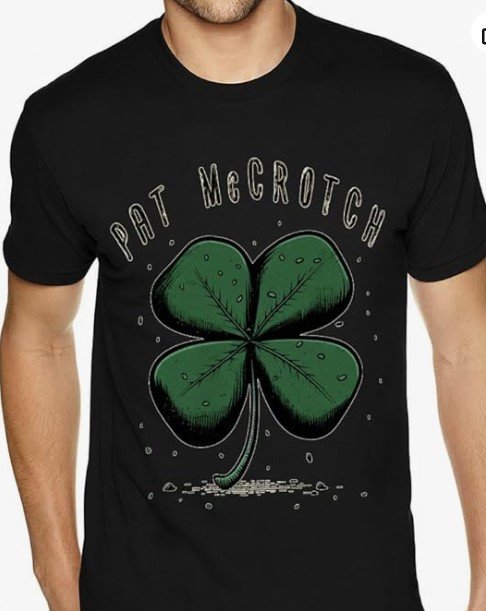T-Shirts in 2025: The Future of Fashion, Technology, and Expression
introduction:T-Shirts in 2025
T-shirts have always been a wardrobe essential, but in 2025, they are more than just basic clothing.
They have evolved into high-tech, sustainable, and customizable fashion pieces, reflecting the latest advancements in fabric technology, personalization, and digital integration.
Whether infused with smart sensors, 3D-printed designs, or eco-friendly materials, T-shirts in 2025 are redefining comfort, style, and functionality.
As fashion adapts to modern consumer needs, T-shirts are no longer just about looks—they are a blend of innovation, sustainability, and personal expression.
This article explores how T-shirts in 2025 have transformed, shaping the future of fashion.

what is the T-Shirts in 2025:
T-shirts have always been a wardrobe essential, but in 2025, they are more than just casual wear.
They have transformed into a fusion of technology, sustainability, and personal expression, setting new standards in the fashion industry.
From self-cleaning fabrics to AI-generated designs, T-shirts in 2025 are not just about style—they are about innovation.
1. Smart T-Shirts: The Future of Wearable Tech
see it
click here

The integration of wearable technology in T-shirts has reshaped how people interact with their clothing. Smart T-shirts in 2025 come with advanced features such as:
see more
- Health Monitoring: Built-in sensors track heart rate, hydration levels, and posture, making them ideal for fitness enthusiasts and healthcare applications.
- Temperature Control: Adaptive fabrics adjust to body temperature, keeping the wearer cool in summer and warm in winter.
- Interactive Displays: Some high-tech T-shirts now have e-ink or micro-LED screens, allowing users to change colors and designs with a simple app.
These smart features are turning T-shirts into an essential tool for health, entertainment, and self-expression.
2. Sustainable T-Shirts: Eco-Friendly and Ethical Fashion
Sustainability is at the heart of fashion in 2025. Consumers are demanding eco-friendly fabrics and zero-waste production methods. Brands have responded by introducing:

- Bioengineered Fabrics: T-shirts made from lab-grown cotton and algae-based textiles that are biodegradable.
- Recycled Materials: Post-consumer plastic bottles and upcycled fabrics are being used to create high-quality, long-lasting T-shirts.
- Waterless Dyeing Techniques: Reducing the environmental impact of color production, brands now use digital printing and plant-based dyes.
Ethical manufacturing practices have also become a priority, ensuring fair wages and safe working conditions. In 2025, fast fashion is fading, and responsible fashion is thriving.
3. Hyper-Personalization and 3D-Printed T-Shirts
In 2025, consumers want clothing that reflects their unique personalities. With the rise of AI-driven customization tools and 3D printing, T-shirts can now be tailored to an individual’s style, body shape, and preferences.
- AI-Generated Art: Custom graphics and prints are created using AI algorithms, resulting in unique designs that cannot be replicated.
- 3D-Printed Textures: T-shirts now feature raised patterns, embedded accessories, and intricate details that were once impossible to achieve with traditional manufacturing.
- Virtual Try-Ons: AI-powered virtual fitting rooms allow customers to see how a T-shirt will look on them before purchasing, reducing waste and returns.
With the help of on-demand manufacturing, brands produce only what is needed, eliminating overproduction and reducing the carbon footprint.
4. Augmented Reality (AR) and Digital Fashion Influence
Fashion and technology are merging in ways never seen before. In 2025, AR-enhanced T-shirts are gaining popularity:
- QR-Activated Graphics: Some T-shirts feature QR codes that, when scanned, reveal hidden animations or digital messages.
- Metaverse-Ready Fashion: Digital fashion influencers and virtual avatars are influencing real-world T-shirt designs. Many brands now offer both physical and digital versions of their designs for use in virtual spaces.
- Interactive Storytelling: Brands are incorporating NFTs and blockchain authentication to verify limited-edition T-shirts, making each piece a collectible.
These innovations make T-shirts not just clothing but a gateway to digital experiences.
5. The Rise of Gender-Neutral and Functional Fashion
Fashion in 2025 is becoming more inclusive and versatile. T-shirts are designed to be worn by anyone, regardless of gender or body type. The trend includes:
- Oversized and Relaxed Fits: Loose, comfortable silhouettes remain popular, catering to all genders and age groups.
- Convertible Styles: Some T-shirts now have adjustable sleeves, detachable hoods, or reversible designs, allowing for multiple styling options.
- Multi-Purpose Wear: Hybrid T-shirts double as workout gear, formal wear, or even smart uniforms with adaptable features.
The era of strictly gendered fashion is fading, and T-shirts are at the forefront of this inclusive movement.
Conclusion: The Future of T-Shirts is Here
T-shirts in 2025 are more than just everyday clothing—they are an intersection of technology, sustainability, and personal identity. Whether through smart fabrics, AI-driven designs, or eco-friendly production, T-shirts have evolved into something much greater than a simple piece of fabric.
As fashion moves toward a tech-savvy, ethical, and customizable future, the humble T-shirt remains a symbol of change, creativity, and innovation.
Are you ready for the next generation of T-shirts? The future is already here.
